In 2017 the Sonoma Valley Fund published a study called Hidden In Plain Sight, an “in-depth look at our community’s needs and its charitable resources: an integrated view of the demand and supply sides of the Valley’s philanthropy.” The findings were compelling and significant.
Katherine Fulton, who conducted the study, used 2014 for her research into local philanthropy. She discovered that charitable organizations in Sonoma Valley received revenue of more than $113 million for the year. Thirty-four million dollars came from individuals. Meanwhile, the City of Sonoma’s budget for 2014 was $31 million. One can readily see how generous and sizable philanthropy is from a Valley population of 44,000.
One of the key findings of the study was the current size and growing population of older adults in the Valley. Sonoma County government estimates that 25% of the county population is over age 65; this translates to 11,000 seniors in our area. This article’s focus is on our aging population. At the time of the study, only 1% of the entire non-profit expenditures were for the benefit of older adults.
Another important issue noted in the study was affordable housing. This issue has been a key public concern for more than a decade. Unaffordable housing impacts workers’ ability to live reasonably close to their places of employment. The sheer number of help wanted signs at local businesses in the Valley has an almost direct correlation to the lack of affordable housing. It impacts seniors in two vital ways: their ability to meet their own continuously rising rental costs on fixed incomes, and the lack of available caregivers in the area.
For years we’ve heard about the impact that the Baby Boomer generation will have on the nation. The forewarned impact is here, now: 10,000 Boomers retire each day, creating the largest retirement population in U.S. history.
Despite the transfer of wealth from their parents, Boomers are not entering their retirement years with the financial security their parents enjoyed. The WWII generation had the benefit of company-managed retirement benefits. By the 1970s, companies who once provided and managed pensions for employees began to turn the responsibility to them, saving the corporations money. Alana Semuls wrote, in This is What Life Without Retirement Savings Looks Like, that in 1979, 28 percent of private-sector workers had participated in defined-benefit retirement plans – by 2014, just two percent did.
Boomers have also struggled to save, due to the raising cost of living, their education of children, and for many having to subsidize the financial costs of aging parents who need care.
Researchers estimated that the number of middle-income elders in the U.S. will nearly double, growing from 7.9 million to 14.4 million by 2020. [Middle income seniors] will make the biggest share of seniors, at 43%. “The low-income cohort has been taken care of by tax subsidies while the high-income cohort is largely self-sufficient. But the middle-income senior has been ignored,” according to Beth Burnham Mace, chief economist at the National Investment Center for Senior Housing and Care. It is the middle-income elder who has been missed in the aging conversation and planning nationally. They are now the faces of a next wave of homelessness already on the rise.
So who is looking out for the older adults in 2019 Sonoma? What is the community’s response to the findings of the In Plain Sight report? When non-profits, community leaders, and government officials in Sonoma Valley were asked, their response was often both unsure and unclear. No one had a direct response. There are three non-profits in the area who provide some direct services to seniors: Friends in Sonoma Helping (FISH), Vintage House, and Hospice by the Bay. Their programs are fairly limited to transportation, education, socialization, and end-of-life. Government services for the social needs of older adults in the Valley are nearly nonexistent. The Council on Aging provides a twice-weekly day program for those who suffer from dementia, as a respite for caregivers. Even finding resources for information on where to turn for senior care needs, or in crisis, is hard. Where does a 90-year-old who has run out of funds and can no longer pay for monthly assisted-living rent turn? This question has not been considered.
A lack in senior housing, care support, and financial assistance… this is difficult information for anyone over 55 to receive about aging in our community. Aging is not a particular subject on anyone’s mind. And it’s seldom discussed among individuals, as denial is the current coping mechanism. Most women feel isolated in their financial struggle and are unaware that they are among the majority of their peers, not the exception.
We’ve all been living in a fog while aging issues are occurring all around us. If we are aware of the difficulties and current issues, there appear to be no immediate or long-term solutions to the problems. Worse yet, we tend to rely on the hope of a beneficent government to resolve them. This is not a current reality nor likely to be one in the near future. Whether individually or collectively, change tends to emerge from crisis. And the Boomer’s sense of shame for not being financially successful at the end of their lives obscures the awareness of the problems and their solutions. So what do we do to combat the present crisis facing older adults in Sonoma Valley?
The answer is, us. Solutions must come from individuals who determine that they can do something to alleviate the suffering of older adults in Sonoma. We must consider organizing a community, non-profit, volunteer-driven organization whose purpose is to serve and care for the older generation. Its function would be to provide some or all of the following social service needs
Shared/Co-housing
For the senior facing homelessness due to economic issues, a non-profit organization could support them by encouraging homeowners to offer a spare bedroom in their home in exchange for rent. Applicants’ information would reside in a database created for potential matches. This potentially solves two problems: one, low-cost rent for the “seeker;” and secondly, additional income for the “provider,” which in turn allows the provider to continue to live independently longer. Other major benefits of this arrangement include the creation of “family support” and an end to isolation and loneliness. There’s also additional reduction for both parties of the ongoing monthly cost of living: household supplies, utility services, water, garbage removal, and ongoing upkeep.
There is an economic benefit when one or both parties need care support. And, if one of the housemates is healthy, she or he can be present for the other to ensure that their care needs are being met either by the housemate or by professionals. Think of the benefit to grown children who no longer have to worry 24/7 about an elderly parent falling – or any of the other small emergencies that adult children dread. Thus a major benefit of shared housing is the opportunity to provide the lowest cost homecare alternative instead of the high costs of for-profit assisted care.
Shared housing can also potentially help replace, delay, or drastically reduce daily private in-home care by an agency. (There is a government program called IHSS, In Home Support Services, available for in home care. However, there is currently a two-year wait list for IHSS in Sonoma County.)
When homecare is required by one or more individuals at the same physical address, the care costs for each of their activities of daily living (ADL) can be reduced dramatically for two or more. This of course doesn’t replace medical oversight in advanced cases.
For many years, board and care homes have been the most economical solution to assisted living and memory care for seniors in California. As our aging population in the Valley has increased demands for assisted living and memory care, costs have also increased dramatically.
Eloise Tweeten of Tweeten Eldercare Advisors, which helps families find higher levels of care outside their homes, has more than 12 years’ experience in senior support. She recently noted the individual monthly cost of private-room care in a licensed board and care home in Sonoma Valley started in the $4,000 to $4,500 per month range in 2017. A private room in 2019 now starts in the $5,500 to $6,500 per month. The primary reasons costs have soared are simple: the demand for care is greater than the available supply; it is more challenging to find local caregivers due to the increased cost of housing after the 2017 wildfires; and there are only seven board and care homes between Kenwood and Sonoma. Assisted living care in Sonoma Valley is already unaffordable for the majority of seniors here. Imagine in a decade what the cost will be. Without the means to pay for care, shared housing is a viable economic and social alternative. It may be the only alternative for some.
The option of building affordable housing for seniors or care facilities to meet demand cannot happen quickly enough for a large portion of adults aging in their homes. And let’s be honest: the painfully slow maze of zoning laws for additional housing, the refusal of people to build additional housing near or on their property, and the lack of investors to address senior needs are all serious roadblocks.
Shared housing is not a perfect solution for everyone but it surely outweighs living outdoors along Sonoma Creek. For instance, SHARE Sonoma is a non-profit county housing solutions organization based in Petaluma that matches housing providers with seekers by addressing the personalities of the individuals and carefully matching compatibilities. Think “online dating for roommates.” SHARE has a higher rate of matching success than similar organizations nationally. Amy Appleton, its executive director, is passionate about her program. Its numerous success stories are fascinating. Her program works successfully; this crisis solution for housing has earned serious consideration in Sonoma Valley.
Hire an older adult
Yes: employ an older person. Seniors already live in the Valley. They have years of work experience and generally their abilities are well beyond the required task. The huge advantage of this broad skill set is stability. Older employees are no longer seeking advancement like younger ones. Seniors are reliable. They show up. They have customer service skills – listening, and respect for the customer – that seem to have disappeared in today’s culture. And older employees will be infinitely grateful to an employer for offering them a chance to continue to be purposeful. Hiring an older adult for a day or more each week could be the economic lifeline for the individual who needs extra cash to pay the rent, buy medication, or save for tomorrow. If you’re an employer, open your mind to the possibility of asking a senior to be a host, a sales clerk, or a substitute
grandparent/babysitter. The list of potential jobs for older adults is extensive. An organization dedicated to senior needs and care can help address this financial crisis by creating a job bank to match workers with job demands. Seniors have years of talent, experience, and personality that are largely untapped. Realizing this potential asset addresses a number of challenges faced by small business in Sonoma.
Create an equivalent of The Mentoring Alliance for seniors
The Mentoring Alliance has nearly 25 years of valued support for children and young adults in the Valley. From the very beginning, thanks to founder Kathy Witkowicki, it was a success. Why not a program to match neighbors – or better yet, families – with an elder or “grandparent” on the other end of the age spectrum? How many children today are raised without the presence of a nearby grandparent or the opportunity of knowing an older person? Think of the mutual benefits that such relationships could have. Imagine an older, shut-in adult receiving a phone call asking how they are doing and if they need anything? Conversely, think of kids alone at home between school and dinner hearing from an older, stable person.
Can you imagine how supported a senior will feel when receiving a plate of warm, homemade food once in a while? Consider the number of older adults in the Valley you know who have no family nearby. We have been a mobile society. Our families are scattered or non-existent. A mentor-styled alliance also allows the elder to be the recipient as well as the “giver” on other occasions. It keeps people on both ends engaged. It subtly says that their lives continue to be valued. It is a true win-win for everyone.
A senior care alliance is the most cost-effective approach to caring for older adults. It’s volunteer driven. It’s personal. It’s community compassion shared and expressed. It’s a reasonable approach to skyrocketing care costs. As an older adult’s care needs begins to mount, the in-touch supporting family can report physical and mental changes that need to be addressed. The non-profit entity sponsoring the alliance then refers the appropriate health agency or individuals for further assistance and provision.
A family resource center for aging needs and solutions
Currently every child with an aging Sonoma parent who needs support begins looking for answers with the arduous task of discovering the who, what, and where of senior care services. And an older individual desperately needs help navigating this minefield of information and solutions for spouses and themselves. Every individual or family starts this search from scratch: thousands of people are looking with greater or lesser success for the same answers. A volunteer organization armed with information and resources can be the comforting voice that answers the phone, calms the nerves, and builds assurance that someone is there to advocate with up-to-date, reliable information. Think of this social need as another expression of and opportunity for Sonoma Valley to continue to build a thriving, engaged, caring community. Sonoma does not abandon its elderly.
An emergency fund
The ability to be able to ask for support once quarterly and in a limited amount could be a lifesaver for many. If we do not create some form of an immediate response to a financial need, do we really want seniors standing on the corners asking for change? Otherwise, what îs an option?
When an older adult is short on the rent, the power bill, required medication, or the co-pay for a medical procedure, we have no agency with the ability to offer immediate assistance. Yes, we can hear the outcry about this idea. Generally, fears about such an agency come from those who lack nothing financially, as they have no idea what life is like on the edge. The other fear is that “yet another governmental agency” will provide handouts to 80-year-old slackers. But what if it’s not a governmental agency? What if it’s an NGO (non-governmental agency) or a subsidized organization?
Napa Valley citizens formed a group modeled after a national program called Share the Care, which advocates for older adults’ needs. Share the Care Napa Valley is a perfect model for Sonoma to emulate. Proceeds from its annual fundraiser contribute to a fund providing financial assistance to Napa’s elderly. Let us not forget the Kaiser study mentioned earlier which noted that in ten short years – 2029 – the middle-income senior will no longer have financial resources for housing and medical care. This is not a future problem. It is one that immediately needs to be addressed for Sonoma seniors who have nowhere to turn for help.
Sonoma Valley is rich in natural beauty, wealth, and natural resources, and it is as a caring, compassionate community. The In Plain Sight study has shown us the enormous generosity of Sonoma Valley philanthropy. This community has been blessed for many years by a generous group of individuals who have led, guided, and nurtured the rich attributes of the Valley for the benefit of everyone who lives here. And the giving isn’t only from wealthy individuals: the amount of volunteerism and small donations have been acknowledged annually by the Sonoma Valley Fund. We owe each individual and volunteer our sincere gratitude for the creation and support of our valued non-profits and institutions.
However, our current community leaders have aged over the last 20 and 30 years. We may not necessarily see the change in them, as many of them are still vital. However, their work is complete. It’s time to look to the next generation, those in their forties and fifties, to become the community leaders.
It’s time for the next generation to step forward, see the community’s needs, and create solutions. It is the energy and the action by our community leaders and volunteers, who have traditionally created true caring and thriving in Sonoma Valley. It is the largest single factor that makes us, as individuals, and our entire community, exceptional. We can use the community goodwill that rose from the ashes in 2017 for this purpose. At no previous point could we so clearly see the extraordinary neighborly support of each other. We recognized that individually we each created an exceptional and greater whole. We understood that we were engaged in life together. Together, we can look at aging, and older adults as grandparent figures who need our care and compassion as we honor their contribution and lives. With this awareness, we can begin to envision and expand our compassion, and take action for our future selves.
Kelsey Maddox has appreciated older adults since childhood, when he benefited from their interest in him, and as he returned the interest in them. Since 1977 he has been a hospice volunteer and facilitator of grief support groups. He holds a Masters degree in counseling psychology with an emphasis on aging from the California Institute of Integral Studies in San Francisco. For the past decade his involvement in the senior care industry and related organizations has only heightened his interests in and service to seniors. Kelsey currently consults in civic and senior issues, and can be reached at Kelsey@sonomasun.com.

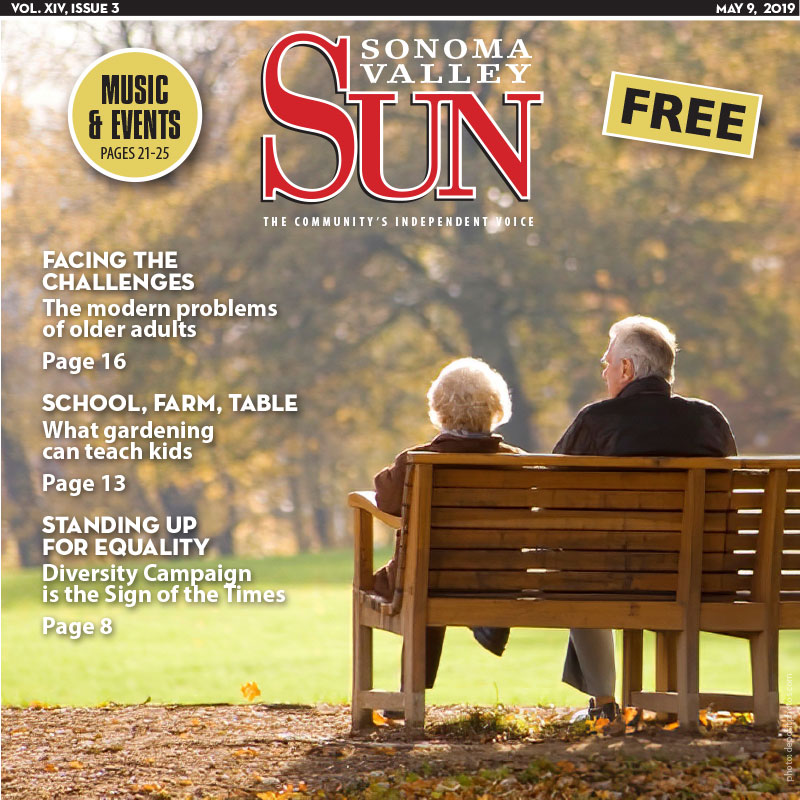
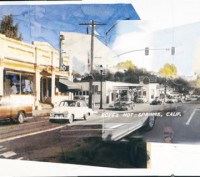

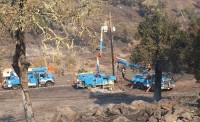

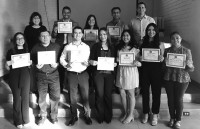

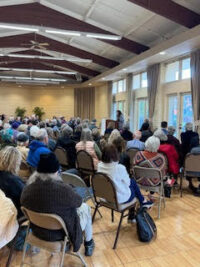

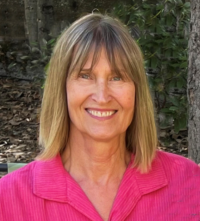
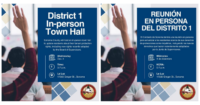
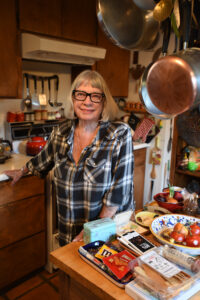

Kelsey this is an excellent, well written article. Obviously you have spent considerable time researching this issue and you have clearly identified both the critical needs and the opportunities we have as a community to address those needs. Well done. Now let’s spread the word!
Rich, thank you for your response. I so appreciate it. Yes, I am aware of the issues of aging in our culture today. I cannot change the world but hopefully, Ican make at least a small impact for a generation of elders who desperately need it.
The next generation? Is that the selfish spoiled rotten generation who are too busy looking at their cellphone to help sn elderly person cross the street or to self entitled to give up their seat on the bus to a old person? I don’t expect the Millinenals to be the action packed answer to any of today’s problems. Except for a few who actually get it.
Thank you, Kelsey, for calling attention to a growing and largely ignored issue in Sonoma Valley and beyond. I hope this article serves as a launchpad for further community discussion and solutions that are right for this community!